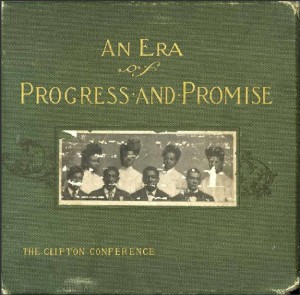
I could find little on the author of this business directory, which was published privately in 1905, but the directory itself is a goldmine of social history. To give a little context, Chicago was one of the destinations for African-Americans during the Great Migration; morever, the city was founded by a Haitian fur trader in the 18th century, and post-Civil War Illinois was progressive in its anti-discrimination and segregation laws. Nevetheless, in a big city such as Chicago, segregation was rife, and African-Americans settled in the “Black Belt,” or the neighborhoods on Chicago’s South Side. There, well-to-do, middle-class, lower-class, and poor African-Americans lived cheek-by-jowl, surviving and thriving in less than ideal circumstances. However, a quick glance through this directory reveals pages of industries in which Chicago’s African-Americans were involved: from restaurants to dentistry, newspapers to millinery, and law to laundries. A lone entry that stokes my imagination is that of Madam Pearl Black, a Clairvoyant–one can only ponder what sort of fortunes she gave her clientele!
You can read the directory here:
Or download it for future perusal here.





Why did the author of this business directory feel he/she had to publish the book privately in 1905? Were African-American businesses not included in the normal city-wide business directories?
For the most part, they were not; however, if an African-American business catered exclusively to white clientele (i.e. a barber or a restaurant), there was a chance they would be listed in the regular business directory. This directory, and others like it, served two purposes: first to show the prosperity, business acumen, and intelligence of African-Americans despite opinions otherwise, and secondly, to help new black migrants know where to go for goods and services (that is, where they would be welcome).
The American racial scene before the 1960’s was very segregated…African-Americans,then referred to as “Negros” or “Colored” lived only in specific areas of many American cities…
Thanks for sharing. You have a talent for making this era of history interesting and accessible for everyone.
@Victoria: You are very welcome, and thank you!